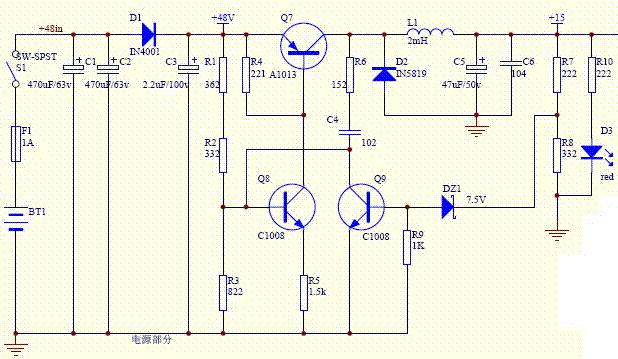wells001
Newbie level 5
This is a linear regulator for converting 48v DC to 15v DC. I have some questions:
1. What are the function of R4, R5 and R9?
2. Is the circuit consisting of D2, L1, C5 and C6 a PI filter?
3. How does feedback circuit work?

1. What are the function of R4, R5 and R9?
2. Is the circuit consisting of D2, L1, C5 and C6 a PI filter?
3. How does feedback circuit work?
